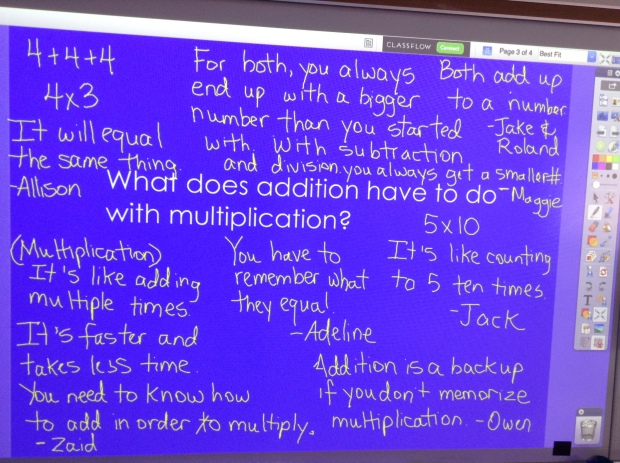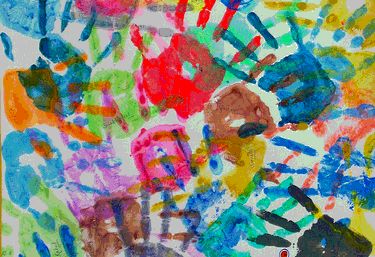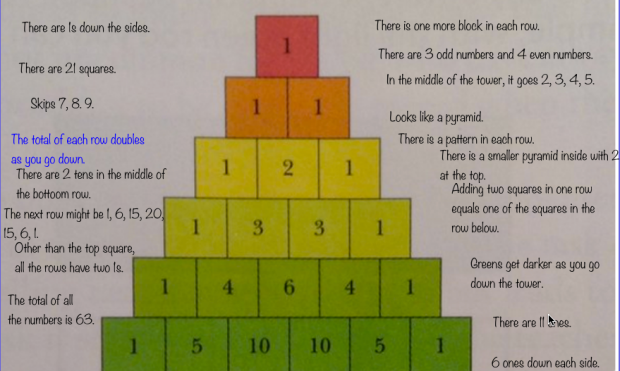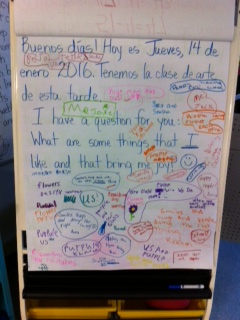I have a question for all you math bloggers out there. HOW DO YOU DO IT?! How in the world do you find the time to sit down and write a post at least once a week? More importantly, how do you make it sound so perfect?! UGH! You’re like those people I went to school with– the ones who could whip out an flawless, on-demand five-page literary analysis in 3.2 seconds. How do you do it? How do your words just come out sounding smart and perfect? I honestly don’t know which one is harder for me– finding the time to sit down and write a post or the actual writing of the post. The former is near impossible, while the latter is simply excruciating. I wish I could make the ideas just flow and not have to rethink every second word.
You’ve probably used or at least heard of the voice-to-text app, right? Oh, what I wouldn’t give for a brain-to-blog app– an app that automatically records your thoughts into a blog. Yep, that needs to be invented yesterday. I’d have about 20 thousand posts by now because I’m constantly thinking about what I’d write in a post. Sitting down and actually translating those thoughts to coherent sentences is another story…
This is the second day (well, night, actually) that I’ve attempted to compose this post. Let’s hope that baby stays asleep long enough this time for me to finish. So a few nights ago I had the tremendous pleasure and privilege of learning from the brilliant Tracy Zager in her webinar, How Do They Relate? Teaching Students to Make Mathematical Connections, hosted by Global Math Department. Wow. That’s about all I can say. Wow wow wow. I am not articulate enough to describe the awesomeness of her presentation. I can, however, share a few humble thoughts.
In her presentation, Tracy emphasized the importance of relational thinking in mathematics. Oftentimes, students perceive math concepts as discrete topics rather than as a “landscape of interconnected concepts.” The term landscape immediately made me think of Fosnot’s landscape of learning (click here for an example). Similar, yet different. Anyway, Tracy asked us to think about two concepts that our students might have trouble relating i.e. fractions and division. Having just wrapped up a unit on developing multiplication with my 2nd graders, I thought perhaps addition and multiplication might be a good pair, although I felt like my students made a fairly strong connection between the two and wouldn’t really have trouble relating. Tracy then gave us the sentence stem, “What does ____ have to do with ____?” where the blanks are intended to be math concepts. In my opinion, this is a fabulous way to guage the students’ depth of understanding of interrelated concepts. I will definitely add this to my routine next year!
So Tracy challenged us to go back to our classrooms and pose this question to our students. Yikes! I felt both eager and apprehensive about how they would respond. Eager because, well, my kids have a way with words that can either bring you to tears with laughter or stun you to silence (in a good way). Apprehensive because…what if they didn’t know how to respond?! What if they didn’t see the relationship?! How would that reflect on my teaching???
So, a few days later, I posed the following question to my students– What does addition have to do with multiplication? I sent them off to reflect individually and record their thoughts on their iPads. Some wrote equations. Some drew pictures. One student told me, “You’re adding on for both.” Then he proceeded to draw an open number line, and illustrated ‘adding on’ by taking a jump from left to right. “See? When you add, you’re adding on. Multiplication, it’s like you keep adding on. So with both, you’re adding on.”
I brought the group back together to share their responses. Here’s what they came up with:
I thought the ideas of ‘remembering’ and ‘memorizing’ were interesting, however my favorite response described addition as a ‘backup’ for when you don’t have a certain multiplication fact memorized. This student didn’t stop there. He went on to state matter-of-factly…
“…they’re kind of like continents…”
In my mind I was thinking, “WHAT?!” “Tell me more,” I said.
Slowly and thoughtfully, he continued, “So, addition is like a continent, and multiplication is a country in that continent…”
I couldn’t make this up if I tried. Read on.
“…and subtraction is the opposite, so it’s another continent…subtraction is like… Australia.”
I couldn’t help but laugh out loud. After all, I’ve never heard of a mathematical operation being likened to a massive landmass. Of course, I had to ask,”What about addition? Which continent is addition?”
He thought for a moment, then said,”Addition is like…like Asia.”
I was used to this student’s sagacious remarks, but regardless of his poetic analogy, I wondered if this is what Tracy was referring to when she spoke of students overgeneralizing, or attempting connections that don’t hold mathematically.
So what do you think? If subtraction was a continent, which continent would it be?



 I loved this task for so many reasons. First and foremost, the students loved it. Their level of engagement was sky-high as they discussed and debated with one another. The more they shared, the more noticings they made. Another reason I liked this task has to do with what those in the math education world describe as a “low floor, high ceiling” task. I interpret this as meaning a task that is easily accessible or initiated by all and that has numerous possibilities to challenge students individually. I chose the word ‘numerous’ rather than ‘endless’ because if the possibilities were endless, then I suppose the task would be considered “low floor, no ceiling?” Anyway, I digress…
I loved this task for so many reasons. First and foremost, the students loved it. Their level of engagement was sky-high as they discussed and debated with one another. The more they shared, the more noticings they made. Another reason I liked this task has to do with what those in the math education world describe as a “low floor, high ceiling” task. I interpret this as meaning a task that is easily accessible or initiated by all and that has numerous possibilities to challenge students individually. I chose the word ‘numerous’ rather than ‘endless’ because if the possibilities were endless, then I suppose the task would be considered “low floor, no ceiling?” Anyway, I digress…



